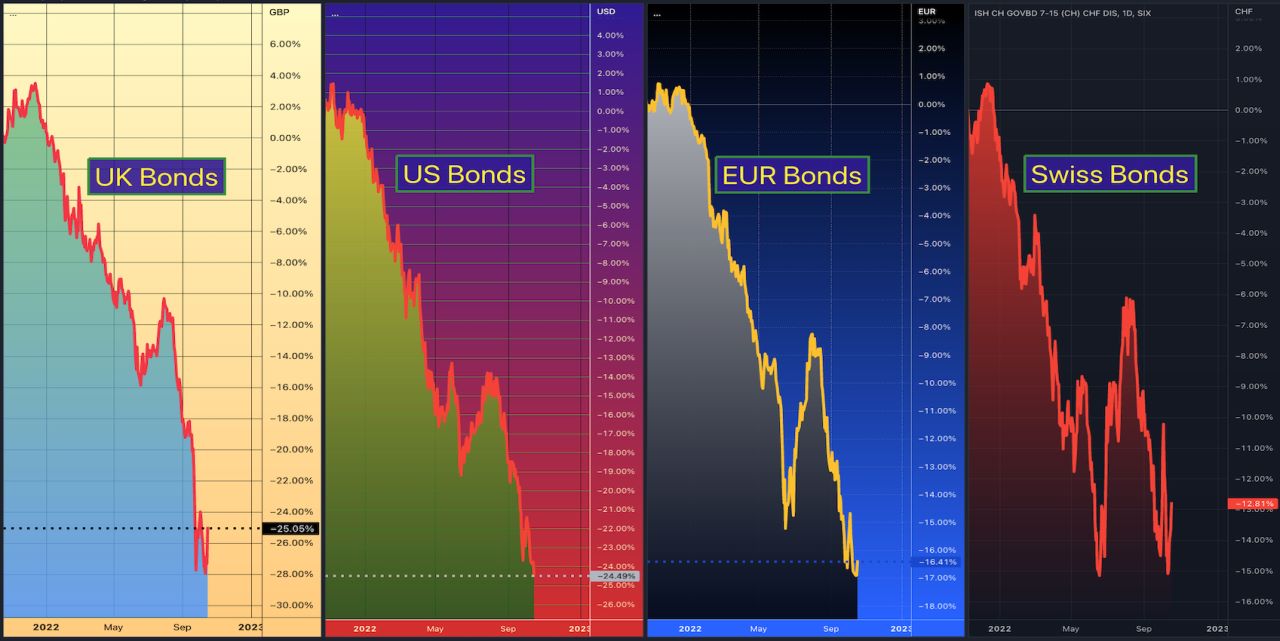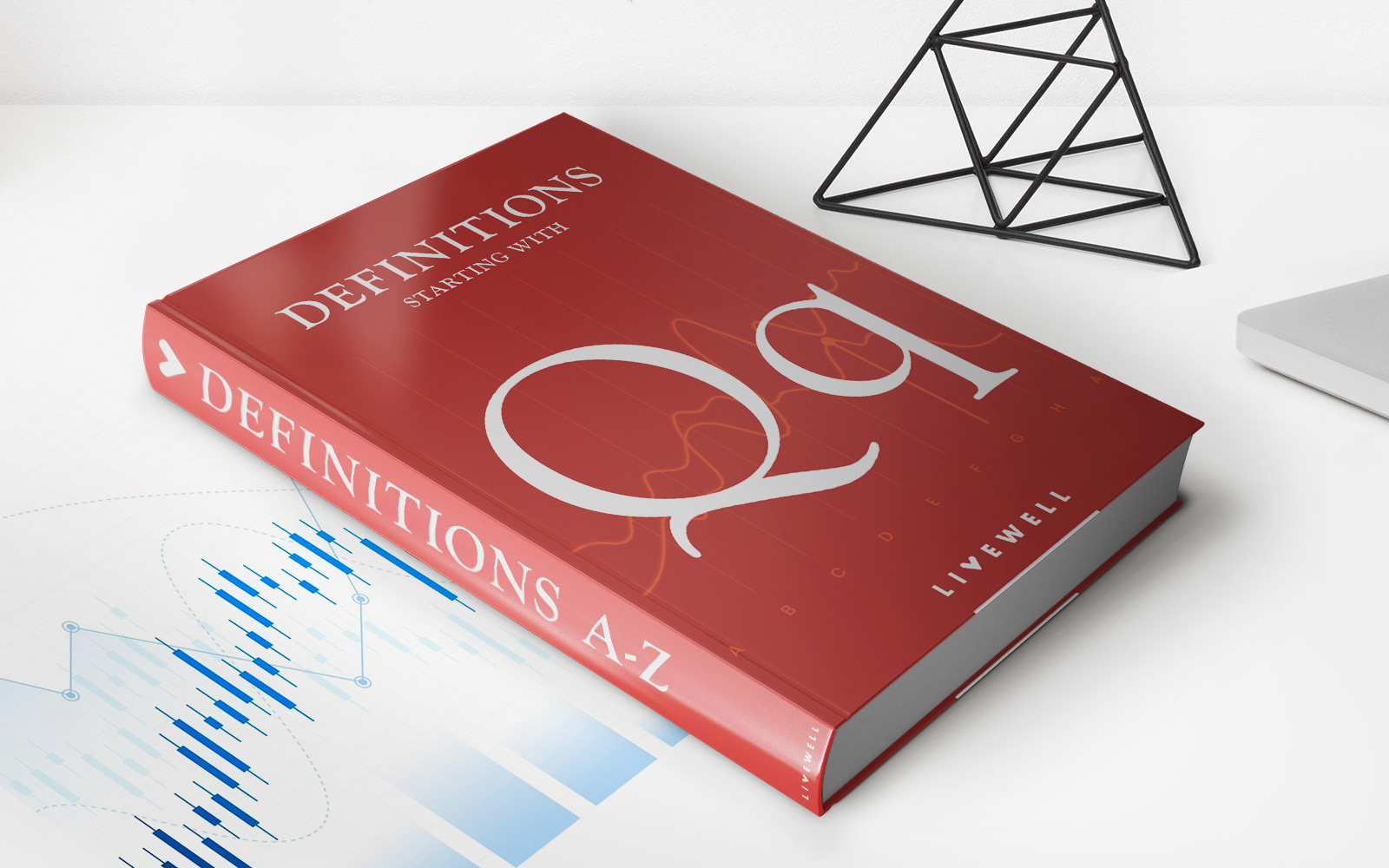

Finance
What Ratio Shows A Company Capital Structure
Modified: December 30, 2023
Learn about the essential ratio that reveals a company's capital structure. Discover how finance plays a crucial role in determining a company's financial health.
(Many of the links in this article redirect to a specific reviewed product. Your purchase of these products through affiliate links helps to generate commission for LiveWell, at no extra cost. Learn more)
Table of Contents
Introduction
When analyzing a company’s financial health, one crucial aspect to consider is its capital structure. Capital structure refers to the way a company finances its operations and investments through a combination of debt and equity. It represents the proportion of debt and equity used to fund a company’s assets and operations.
The capital structure of a company plays a vital role in determining its financial stability and risk profile. A well-balanced capital structure can help a company optimize its cost of capital, increase its profitability, and withstand economic downturns. On the other hand, an unbalanced or inefficient capital structure can expose a company to unnecessary risks and hinder its growth potential.
One of the key metrics that helps assess a company’s capital structure is the debt-to-equity ratio. This ratio provides insights into the relative weight of debt and equity in a company’s financing. It indicates the extent to which a company relies on borrowed money compared to the funds invested by its shareholders.
There are also other important ratios that provide a more comprehensive view of a company’s capital structure, such as the debt ratio, equity ratio, total debt-to-capital ratio, and total debt-to-total assets ratio. These ratios offer different perspectives on how a company’s assets are financed and the level of financial leverage it employs.
In this article, we will explore these key ratios that reveal a company’s capital structure. We will discuss their definitions, formulas, and significance in evaluating a company’s financial position. Additionally, we will delve into the importance of choosing the right capital structure and the factors that influence this decision.
By understanding these ratios and their implications, investors, analysts, and business owners can make informed decisions regarding a company’s financial health and its ability to generate sustainable growth and returns.
Definition of Capital Structure
Capital structure refers to the mix of different sources of financing used by a company to fund its operations and investments. It represents the composition of a company’s liabilities and the proportion of debt and equity in its financing structure.
Debt financing involves borrowing money from external sources, such as banks or bondholders, which the company is obligated to repay over a specified period of time. Equity financing, on the other hand, involves raising funds through the sale of shares to investors, who become partial owners of the company.
The capital structure of a company can vary depending on its industry, size, growth stage, and financial objectives. Companies may choose to rely more on debt financing if they aim to leverage their investments and benefit from the tax advantages of interest payments. Conversely, companies may opt for more equity financing if they want to maintain more control over decision-making or have access to additional capital for growth opportunities.
A well-structured capital mix is essential to achieve financial stability, optimize the cost of capital, and mitigate risk. A company with an optimal capital structure can strike a balance between maximizing profitability and minimizing the cost of capital. Striking this balance allows the company to generate sustainable returns for shareholders while maintaining sufficient financial flexibility.
It is important to note that capital structure decisions can have significant implications for a company’s financial health and value. Excessive debt can lead to higher interest expenses, increased financial risk, and difficulty in obtaining additional financing. On the other hand, relying heavily on equity financing can dilute ownership and reduce control for existing shareholders.
Overall, understanding the capital structure of a company provides crucial insights into how it is financed and the risk-reward trade-offs associated with its financing choices. By analyzing the composition of a company’s liabilities and the proportion of debt and equity, investors and analysts can evaluate its financial stability, risk profile, and ability to meet its financial obligations.
Importance of Capital Structure
The capital structure of a company plays a crucial role in its financial management and overall success. It affects various aspects of the business, including its profitability, risk profile, and ability to raise funds. Here are some key reasons highlighting the importance of capital structure:
- Optimizing the cost of capital: A well-structured capital mix can help a company minimize its overall cost of capital. By balancing the use of debt and equity financing, a company can take advantage of lower interest rates on debt while considering the cost of equity. Achieving the optimal cost of capital allows the company to maximize its profitability and enhance shareholder value.
- Managing financial risk: The capital structure plays a crucial role in managing financial risk. Excessive debt can increase interest expenses and financial obligations, putting strain on the company’s cash flow. On the other hand, relying solely on equity financing may dilute ownership and reduce control for existing shareholders. Striking the right balance between debt and equity helps to mitigate financial risk and maintain adequate financial flexibility.
- Ability to attract investors: A company with a well-balanced and sound capital structure is more likely to attract investors. Investors typically assess a company’s capital structure to evaluate its financial health and risk profile. A well-structured capital mix demonstrates the company’s ability to manage its financial obligations and generate sustainable returns. This can lead to increased investor confidence and potentially higher stock valuations.
- Flexibility in raising funds: A well-managed capital structure provides flexibility in raising funds. Maintaining a mix of debt and equity allows a company to access different sources of financing. Having a diverse range of funding options makes it easier for the company to navigate financial challenges, undertake growth opportunities, and seize favorable investment prospects.
- Mitigating tax implications: The choice of capital structure can have significant tax implications. Interest payments on debt are tax-deductible, which can provide a tax shield for the company and reduce its overall tax burden. By optimizing the amount of debt in the capital structure, a company can potentially lower its tax expenses and enhance its after-tax profitability.
It is important for companies to carefully analyze and determine the appropriate capital structure for their specific needs and circumstances. The optimal capital structure varies depending on factors such as industry dynamics, economic conditions, and growth objectives. By considering these factors and understanding the importance of capital structure, companies can make informed decisions to maximize their financial performance and drive long-term success.
Debt-to-Equity Ratio
The debt-to-equity ratio is a financial metric that measures the proportion of long-term debt to shareholders’ equity in a company’s capital structure. It provides insights into the level of financial leverage and the extent to which a company is relying on borrowed funds compared to its shareholders’ investments.
The formula for calculating the debt-to-equity ratio is:
Debt-to-Equity Ratio = Total Debt / Shareholders’ Equity
A high debt-to-equity ratio indicates that a company has a higher proportion of debt compared to equity, suggesting a higher financial risk and potential for defaulting on its debt obligations. On the other hand, a low debt-to-equity ratio indicates a lower level of financial leverage and less reliance on borrowed funds.
The debt-to-equity ratio is widely used by investors, lenders, and analysts to assess a company’s financial health and risk profile. Here are some key insights that can be derived from analyzing the debt-to-equity ratio:
- Financial Risk: A higher debt-to-equity ratio implies higher financial risk for the company. When a significant portion of a company’s capital structure is composed of debt, it increases the risk of not being able to meet debt obligations, especially in challenging economic conditions. A company with a lower debt-to-equity ratio has a stronger financial position and is considered less risky.
- Profitability: The debt-to-equity ratio can also impact a company’s profitability. While debt can provide leverage and amplify profits during periods of growth, it also increases interest expenses and can result in higher debt servicing costs. A company with a moderate debt-to-equity ratio may strike a balance between the benefits of debt leverage and the associated costs, leading to sustainable profitability.
- Access to Financing: Lenders and investors analyze the debt-to-equity ratio to assess a company’s ability to access additional financing. A company with a high debt-to-equity ratio may face challenges in obtaining favorable loan terms or attracting new equity investors. On the other hand, a low debt-to-equity ratio indicates a healthier financial position and may attract more favorable financing options.
- Industry Comparison: Analyzing the debt-to-equity ratio in comparison to industry peers provides valuable insights into the company’s competitiveness and financial stability. Different industries have varying capital structure norms due to industry-specific risk factors and cash flow dynamics. Comparing a company’s debt-to-equity ratio with industry benchmarks helps to assess its relative position and its ability to manage financial risks efficiently.
It is important to note that the debt-to-equity ratio should be used in conjunction with other financial ratios and factors to gain a comprehensive understanding of a company’s financial health. While a high debt-to-equity ratio may indicate elevated risk, it does not necessarily imply poor financial performance. Similarly, a low debt-to-equity ratio does not always guarantee financial strength.
By analyzing the debt-to-equity ratio in the context of the company’s industry, growth prospects, and risk tolerance, investors and analysts gain valuable insights into a company’s capital structure and its ability to meet its financial obligations while generating sustainable returns.
Debt Ratio
The debt ratio is a financial ratio that measures the proportion of a company’s total assets that are financed by debt. It provides insights into the level of financial risk associated with a company’s capital structure and the extent to which debt is used to fund its assets.
The formula for calculating the debt ratio is:
Debt Ratio = Total Debt / Total Assets
The debt ratio represents the percentage of a company’s assets that are funded by debt. A higher debt ratio indicates a higher level of debt financing and a greater risk associated with the company’s financial stability. Conversely, a lower debt ratio suggests a lower reliance on borrowed funds and a lower level of financial risk.
The debt ratio is commonly used by investors, lenders, and analysts to assess a company’s solvency and financial health. Here are some key insights that can be derived from analyzing the debt ratio:
- Financial Risk: The debt ratio is an important indicator of a company’s financial risk. A higher debt ratio means that a larger portion of the company’s assets is financed by debt, which indicates a higher risk of not being able to meet debt obligations. A company with a lower debt ratio is considered more financially stable and less likely to default on its debt.
- Capital Intensity: The debt ratio also provides insights into a company’s capital intensity, particularly in asset-heavy industries. Industries that require large capital investments, such as manufacturing or transportation, may have higher debt ratios due to the need for substantial financing to acquire and maintain assets. Understanding the capital intensity of an industry is crucial when comparing the debt ratio of different companies within the same sector.
- Profitability: While a higher debt ratio can increase the risk of financial distress, it can also be an opportunity for increased profitability. Debt financing allows a company to leverage its investments and potentially generate higher returns on equity. However, it is essential to strike a balance between debt financing and profitability, as excessive debt can result in higher interest expenses, reducing profitability.
- Financing Flexibility: An excessively high or low debt ratio can impact a company’s financing flexibility. A company with a high debt ratio may have difficulty obtaining additional debt financing or attractive loan terms due to perceived financial risk. On the other hand, a company with a low debt ratio may face challenges in raising debt financing if it requires additional capital for growth opportunities.
It is important to note that the debt ratio should be interpreted in conjunction with other financial ratios and industry benchmarks to gain a comprehensive view of a company’s financial position. Industries have different capital structure norms based on their risk profiles and business models, which can influence the interpretation of a company’s debt ratio.
By analyzing the debt ratio, investors and analysts can assess a company’s financial risk, solvency, and ability to meet its debt obligations. Additionally, understanding the debt ratio in the context of industry benchmarks provides valuable insights into a company’s competitive position and financial stability.
Equity Ratio
The equity ratio is a financial ratio that measures the proportion of a company’s total assets that are funded by shareholders’ equity. It provides insights into the level of ownership and control that shareholders have in the company’s capital structure.
The formula for calculating the equity ratio is:
Equity Ratio = Shareholders’ Equity / Total Assets
The equity ratio represents the percentage of a company’s assets that are financed by shareholders’ equity. A higher equity ratio indicates a higher level of equity financing and a lower level of financial risk. On the other hand, a lower equity ratio suggests a higher reliance on debt financing and a potentially higher level of financial risk.
The equity ratio is commonly used by investors, lenders, and analysts to evaluate the financial health and stability of a company. Here are some key insights that can be derived from analyzing the equity ratio:
- Financial Stability: The equity ratio is an important indicator of a company’s financial stability. A higher equity ratio indicates that a larger portion of the company’s assets is funded by shareholders’ equity, which enhances the company’s ability to absorb financial shocks and meet its financial obligations. A company with a lower equity ratio may be more vulnerable to external economic downturns.
- Ownership and Control: The equity ratio reflects the level of ownership and control that shareholders have in the company. A higher equity ratio implies a greater degree of ownership by shareholders, which may provide them with more influence over the company’s decision-making processes. Conversely, a lower equity ratio may indicate that a significant portion of the company is owned by debt holders or other stakeholders.
- Return on Equity: The equity ratio can have implications for a company’s return on equity (ROE). A higher equity ratio means that a larger portion of the company’s assets is financed by equity. This can potentially result in a higher ROE, as the company is less burdened by interest expenses associated with debt financing. However, it is important to consider the industry norms and capital structure preferences when evaluating the ROE.
- Investor Confidence: The equity ratio can impact investor confidence and perception of a company’s financial stability. Investors often view a higher equity ratio as a positive sign, indicating that the company is financially conservative and has a stronger buffer against financial risks. A company with a lower equity ratio may face challenges in attracting long-term investors.
It is essential to consider the equity ratio in conjunction with other financial ratios and industry benchmarks to gain a comprehensive understanding of a company’s financial position. Different industries have varying capital structure preferences, and analyzing the equity ratio relative to industry peers provides valuable insights into a company’s competitive position and financial stability.
By analyzing the equity ratio, investors and analysts can assess a company’s financial stability, ownership structure, and ability to meet its financial obligations. Additionally, understanding the equity ratio can influence investor confidence and provide insights into a company’s financial health and long-term prospects.
Total Debt-to-Capital Ratio
The total debt-to-capital ratio is a financial metric that measures the proportion of a company’s total debt to its total capital. It provides insights into the overall level of debt financing in a company’s capital structure and its ability to meet its financial obligations.
The formula for calculating the total debt-to-capital ratio is:
Total Debt-to-Capital Ratio = Total Debt / (Total Debt + Shareholders’ Equity)
The total debt-to-capital ratio represents the percentage of a company’s total capital that is financed by debt. It indicates the relative importance of debt versus equity in funding a company’s operations and investments. A higher total debt-to-capital ratio suggests a larger share of debt financing, while a lower ratio indicates a higher proportion of equity financing.
The total debt-to-capital ratio is a valuable tool for investors, lenders, and analysts to assess a company’s financial risk, leverage, and capital structure. Here are some key insights that can be derived from analyzing the total debt-to-capital ratio:
- Financial Risk: The total debt-to-capital ratio is an important indicator of a company’s financial risk. A higher ratio indicates a greater reliance on debt financing, which can increase financial risk, particularly in economic downturns or when interest rates rise. A lower ratio suggests a more conservative capital structure and a reduced risk of defaulting on debt obligations.
- Capital Structure: The total debt-to-capital ratio helps assess a company’s capital structure and balance between debt and equity financing. By understanding the composition of a company’s capital, investors and analysts can gauge its ability to generate returns and manage financial risk. Different industries may have different preferred debt-to-capital ratios based on their risk profiles and growth prospects.
- Interest Coverage: The total debt-to-capital ratio can impact a company’s ability to service its debt. A higher ratio implies higher interest payments and potentially lower interest coverage ratios. This can indicate a greater challenge for the company to generate sufficient cash flow to meet its debt obligations. Conversely, a lower ratio generally suggests greater financial flexibility to service debt interest payments.
- Investor Perception: The total debt-to-capital ratio influences investor perception of a company’s financial health and stability. A higher ratio may be viewed as a red flag by investors, signaling a higher level of financial risk and potential instability. Conversely, a lower ratio may be perceived as a positive indicator of financial strength and prudence in managing debt.
It is important to consider the total debt-to-capital ratio in conjunction with other financial ratios and industry benchmarks to gain a comprehensive understanding of a company’s financial position. Comparative analysis with industry peers helps to evaluate whether a company’s debt-to-capital ratio is within an acceptable range for its sector.
By analyzing the total debt-to-capital ratio, investors and analysts can assess a company’s financial risk, leverage, and capital structure. Understanding the overall level of debt financing and its impact on the company’s financial stability is critical for making informed investment decisions and evaluating its ability to meet financial obligations.
Total Debt-to-Total Assets Ratio
The total debt-to-total assets ratio is a financial metric that measures the proportion of a company’s total debt to its total assets. It provides insights into the extent to which a company’s assets are financed by debt and indicates the level of financial risk associated with its capital structure.
The formula for calculating the total debt-to-total assets ratio is:
Total Debt-to-Total Assets Ratio = Total Debt / Total Assets
The total debt-to-total assets ratio represents the percentage of a company’s total assets that are financed by debt. A higher ratio indicates a higher level of debt financing and suggests a greater financial risk. Conversely, a lower ratio suggests a lower reliance on debt financing and indicates a potentially lower level of financial risk.
The total debt-to-total assets ratio is a key metric used by investors, lenders, and analysts to evaluate a company’s financial health and capital structure. Here are some insights that can be derived from analyzing the total debt-to-total assets ratio:
- Financial Risk: The total debt-to-total assets ratio provides a measure of a company’s financial risk. A higher ratio indicates a higher level of debt and signifies a greater risk of defaulting on debt obligations. Companies with a high total debt-to-total assets ratio may face challenges in meeting their financial obligations, especially in economic downturns or when interest rates rise.
- Leverage: The total debt-to-total assets ratio measures a company’s leverage, specifically the proportion of debt used to finance its assets. Higher leverage may enhance returns in favorable market conditions but can also amplify losses during economic downturns. A lower leverage ratio suggests a more conservative approach to financing assets.
- Capital Structure: The total debt-to-total assets ratio helps evaluate a company’s capital structure. It shows the composition of a company’s assets and the extent to which they are financed by debt. Companies with a higher ratio rely more on debt financing, while those with a lower ratio have a greater proportion of equity financing. Evaluating a company’s capital structure is essential in understanding its financial stability and risk profile.
- Borrowing Capacity: The total debt-to-total assets ratio influences a company’s borrowing capacity. Lenders and creditors assess this ratio to evaluate a company’s ability to repay debt and to determine the terms and conditions of additional financing. Companies with a lower ratio often have better access to financing at more favorable terms, while those with a higher ratio may face higher interest rates or difficulty in securing additional loans.
It is important to consider the total debt-to-total assets ratio in conjunction with other financial ratios, industry benchmarks, and the company’s specific circumstances. Different industries may have varying levels of acceptable debt-to-assets ratios due to their unique characteristics and capital requirements.
By analyzing the total debt-to-total assets ratio, investors and analysts can assess a company’s financial risk, leverage, and capital structure. Understanding the level of debt financing and its impact on a company’s ability to meet financial obligations is critical in making informed investment decisions and evaluating its overall financial health.
Importance of Choosing the Right Capital Structure
Choosing the right capital structure is of utmost importance for companies, as it directly impacts their financial health, profitability, and ability to achieve long-term growth. Here are some key reasons highlighting the importance of selecting the appropriate capital structure:
- Optimizing Cost of Capital: The right capital structure helps optimize the cost of capital for a company. By striking a balance between debt and equity financing, a company can minimize its overall cost of capital. A lower cost of capital allows the company to invest in profitable projects, enhance its competitiveness, and maximize shareholder value.
- Enhancing Profitability: The capital structure plays a crucial role in a company’s profitability. Optimal use of debt can amplify returns on equity and lead to higher profitability, especially during periods of economic expansion. However, excessive debt can result in higher interest expenses, reducing profitability. The right capital structure ensures a balance between debt and equity to maximize profitability.
- Managing Financial Risk: The choice of capital structure affects a company’s financial risk profile. Too much debt can increase the company’s vulnerability to economic downturns or interest rate fluctuations. On the other hand, too much equity financing can dilute ownership and reduce potential returns. Selecting the right capital structure helps manage financial risk and provides stability during challenging times.
- Access to Funding: The capital structure influences a company’s ability to raise funds from various sources. A well-designed capital structure attracts lenders, investors, and other stakeholders, providing the company with greater flexibility in accessing capital. The right capital structure enables companies to seize growth opportunities, invest in research and development, and navigate unexpected market conditions.
- Sustainability and Long-Term Growth: The right capital structure ensures the long-term sustainability and growth of a company. By aligning the financing mix with the company’s growth trajectory and industry dynamics, the capital structure provides stability and enables the company to invest in innovations, expand its operations, and remain competitive in the market.
It is important to note that the right capital structure is not a one-size-fits-all approach. Each company’s capital structure should be customized based on its unique characteristics, financial objectives, industry dynamics, and risk appetite. Factors such as cash flow generation, market conditions, and regulatory constraints should also be considered while deciding on the capital structure.
Moreover, the choice of capital structure is not static and may need to be periodically reviewed and adjusted as the company’s circumstances change. As the company grows, its financing needs, risk profile, and investor expectations may evolve. Regular evaluation of the capital structure ensures that it remains aligned with the company’s goals and market conditions.
By choosing the right capital structure, companies can optimize their financial performance, manage risk, attract investment, and position themselves for sustainable long-term growth. It is a critical decision that requires careful analysis, consideration of market dynamics, and consultation with financial advisors to ensure the best possible outcome for the company and its stakeholders.
Factors Influencing Capital Structure
The capital structure of a company is influenced by a variety of factors that shape its financing decisions and determine the mix of debt and equity used to fund its operations. Understanding these factors is crucial for companies to make informed choices about their capital structure. Here are some key factors that influence capital structure:
- Profitability and Cash Flow: Companies with higher profitability and stronger cash flow may have more flexibility in choosing their capital structure. Higher earnings and cash reserves provide a cushion against financial risks associated with debt financing, allowing for a higher proportion of debt in the capital structure.
- Growth Prospects: The growth prospects of a company play a significant role in determining its capital structure. Companies with high growth potential may be more inclined to rely on equity financing to fuel their expansion plans. On the other hand, companies with stable, cash flow-generating operations may opt for debt financing to take advantage of the tax benefits and lower borrowing costs.
- Industry Characteristics: Different industries have varying capital structure norms due to factors such as industry risk, competition, and regulation. Capital-intensive industries, such as manufacturing or infrastructure, often have higher debt levels due to the need for substantial investments in fixed assets. Industries with stable cash flows, such as utilities or consumer staples, may lean more towards debt financing.
- Tax Considerations: Tax implications can influence a company’s capital structure decisions. Interest payments on debt are typically tax-deductible, providing a tax shield that lowers the overall tax burden. As such, companies may prefer debt financing to benefit from this tax advantage and reduce their tax expenses, ultimately increasing their after-tax profits.
- Risk Appetite: A company’s risk appetite is a key driver in determining its capital structure. Some companies may be more conservative and prioritize financial stability, opting for a lower debt level and higher equity financing. Others may have a higher risk appetite and be willing to take on more debt to finance growth opportunities, potentially leading to higher returns but also a greater risk of financial distress.
- Market Conditions: The prevailing market conditions, such as interest rates and investor sentiment, can influence the choice of capital structure. Low interest rates may make debt financing more attractive, as borrowing costs are lower. Investor demand for equity and debt securities can also impact the ease and cost of raising funds through different financing options.
- Debt Capacity and Credit Ratings: A company’s debt capacity, determined by its ability to service debt and meet financial obligations, influences the capital structure choices. Companies with strong credit ratings and a history of consistent earnings may have easier access to debt financing at favorable terms. Conversely, companies with limited debt capacity may need to rely more on equity financing.
It is important to recognize that no single factor dictates the ideal capital structure for a company. Each company has its own unique circumstances and should carefully evaluate these factors to determine the most appropriate capital structure. Companies often consult financial advisors and conduct thorough analysis to strike a balance between risk, profitability, growth prospects, and financial stability.
Additionally, it is vital for companies to reassess their capital structure periodically as conditions change. As the business evolves, the industry landscape shifts, and new opportunities arise, the capital structure may need to be adjusted to support the company’s strategic objectives and ensure its long-term financial success.
Conclusion
The capital structure of a company is a critical aspect of its financial management and overall success. By balancing debt and equity financing, companies can optimize their cost of capital, manage financial risk, and position themselves for sustainable growth. Key ratios such as the debt-to-equity ratio, debt ratio, equity ratio, total debt-to-capital ratio, and total debt-to-total assets ratio provide valuable insights into a company’s capital structure and financial stability.
Choosing the right capital structure is essential for companies to achieve their financial goals. It requires careful consideration of factors such as profitability, growth prospects, industry characteristics, tax implications, risk appetite, market conditions, and debt capacity. By analyzing these factors, companies can make informed decisions that align with their unique circumstances and objectives.
The right capital structure enables companies to optimize their cost of capital, enhance profitability, mitigate financial risk, attract financing, and support long-term growth. It is not a static decision and should be periodically reviewed and adjusted in response to changing market dynamics and company needs.
Investors, lenders, and analysts rely on capital structure analysis to assess a company’s financial health, risk profile, and ability to meet its financial obligations. By understanding a company’s capital structure and its implications, stakeholders can make more informed investment decisions and assess the company’s financial stability and growth potential.
In conclusion, capital structure is a key consideration for companies aiming to maintain a strong financial position, maximize profitability, and sustain growth. By adopting an optimal capital structure, companies can achieve a balance between debt and equity financing, ensure financial stability, and drive long-term success in the dynamic business landscape.














